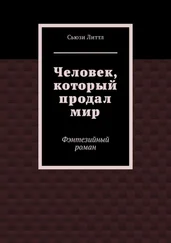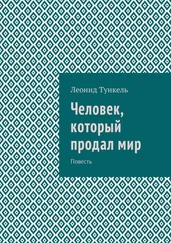Ratchnevsky, Genghis Khan pp. 181–183.
Doerfer, Tiirkische und mongolische Elemente I pp. 102–107; Boyle, Successors p. 219.
Spuler, Mongolen in Iran pp. 349–350, 422–425.
Ratchnevsky, Genghis Khan p. 186.
JB I pp. 197–200; Boyle, Successors pp. 65–66; d'Ohsson, Histoire II pp. 84–86.
JB I pp. 197–200; Boyle, Successors pp. 65–66; d'Ohsson, Histoire II pp. 86–87.
Thomas T. Allsen, 'Ogedei and Alcohol," Mongolian Studies 29 (2007) pp. 3–12; Boyle, Successors p. 188; Lane, Daily Life p. 163.
Rachewiltz, In the Service pp. 102–104.
Boyle, Successors pp. 19, 180–181, 201; Fletcher, 'The Mongols," pp. 37–38.
JB I pp. 239–244; Boyle, Successors p. 180; Hambis, Le chapitre CVII du Yuan Che pp. 3–4. For more on Koden and Shiremun see Buell, Dictionary pp. 184, 243.
Devin DeWeese, 'Islamization in the Mongol Empire," in Di Cosmo, Frank & Golden, Chinggisid Age pp. 120–134.
Kohlberg, Ibn Tawus p. 10; Lambton, Continuity and Change p. 249.
Schurmann, Economic Structure pp. 66–67.
RT II p. 330; Boyle, Successors pp. 65, 120; Franke, Geschichte iv p. 305; d'Ohsson, Histoire II p. 87.
JR II р. 1148.
Dawson, Mongol Mission p. 13; J. A. Boyle, 'The Burial Place of the Great Khan Ogedei," Acta Orientalia 32 (1970) pp. 45–50.
Pelliot & Hambis, Campagnes p. 244.
Boyle, Successors pp. 54–55.
For Song expertise on this see Needham, Science and Civilization iv part 3 pp. 678–687; Atwood, Encyclopedia p. 509.
Denis Sinor, 'The Mongols in the West," Journal of Asian History 33 (1999) pp. 1–44.
Hyland, Medieval Warhorse p. 131; Doerfer, Tiirkische und mongolische Elemente I pp. 387–391.
Vernadsky, The Mongols in Russia p. 49; Moss, History of Russia p. 69.
Buell, Dictionary pp. 255–258.
Dawson, Mongol Mission p. 57.
Moss, History of Russia p. 71. The waspish Russian historian was Nikolai Karamzin, who wrote a twelve volume history of Russia in the early nineteenth century. For an analysis of Batu see Spuler, Goldene Horde pp. 10–32. See also Pelliot, Notes sur Marco Polo I pp. 88–89; Boyle, Successors p. 107; T. Allsen, 'The Princes of the Left Hand,' Archivum Eurasiae Medii Aevi 5 (1987) pp. 5–40 (esp. p. 10).
JR II p. 1164.
Bretschneider, Mediaeval Researches I pp. 308–309, d'Ohsson; Histoire, II p. 111; Rachewiltz, In the Service p. 22.
Spuler, Goldene Horde p. 16.
JR II pp. 809–813; Peter Jackson, Delhi Sultanate pp. 39, 104.
Thomas T. Allsen, 'Prelude to the Western Campaign: Mongol Military Operations in the Volga-Ural region, 1217–1237,' Archivum Eurasiae Medii Aevi 3 (1983) pp. 5–24 (at pp. 10–13); Vernadsky, Ancient Russia pp. 222–228.
Istvan Zimonyi, 'The Volga Bulghars between Wind and Water, 1220–1236,' Acta Orientalia Academiae Scientiarum Hungaricae 46 (1993) pp. 347–355.
Spuler, Goldene Horde p. 15.
Bretschneider, Mediaeval Researches I pp. 306–308; Allsen, 'Prelude,' loc. cit. pp. 14–18; d'Ohsson, Histoire II p. 15.
Bretschneider, Mediaeval Researches I p. 309.
Gockenjan & Sweeney, Mongolensturm p. 104.
Bretschneider, Mediaeval Researches I p. 310.
Detailed linguistic analysis of some of the place-names mentioned in the sources can be found in Donald Ostrowski, 'City Names of the Western Steppes at the Time of the Mongol Invasion,' Bulletin of the School of Oriental and African Studies 61 (1998) pp. 465–475.
Allsen, 'Prelude,' loc. cit. pp. 19–24.
Gerald Mako, 'The Islamization of the Volga Bulghars: A Question Reconsidered,' Archivum Eurasiae Medii Aevi 18 (2011) pp. 199–223.
Bretschneider, Mediaeval Researches I p. 311.
Pelliot, 'A propos des Comans,' Journal Asiatique 208 (1920) pp. 125–185; Barthold, Histoire des turcs pp. 89–91; Peter B. Golden, 'Cumanica IV: The Tribes of the Cuman-Qipchags,' Archivum Eurasiae Medii Aevi 9 (1997) pp. 99–122; Golden, 'Religion among the Qipchags of Medieval Eurasia,' Central Asiatic Journal 42 (1998) pp. 180–237; Golden, 'War and Warfare in the pre-Chinggisid Steppes of Eurasia,' in Di Cosmo, Warfare pp. 105–172; Standen & Powers, Frontiers in Question.
JB II pp. 553–554; Boyle, Successors pp. 58–59.
Bretschneider, Mediaeval Researches I p. 311.
Bretschneider, Mediaeval Researches I p. 312.
Pelliot, 'A propos des Comans,' loc. cit. pp. 166–167. For Bujek see JB II p. 269.
Christian, History I p. 361.
Mitchell & Forbes, Chronicle of Novgorod p. 81.
Fennell, Crisis pp. 69–70.
'Vladimir-Suzdalia,' in Langer, Medieval Russia pp. 245–248.
Fennell, Crisis p. 71–75; Martin, Medieval Russia p. 126.
Fennell, Crisis p. 85, using a figure arrived at by the Russian historian S. M. Soloviev.
Grekov & Yakubovski, Horde d'Or p. 200.
Spuler, Goldene Horde p. 17; Vernadsky, Source Book I p. 45; d'Ohsson, Histoire II pp. 113–115.
Zenkovsky, Epics, Chronicles and Tales p. 202.
RT II p. 327; Boyle, Successors p. 59; Bretschneider, Mediaeval Researches I p. 313.
The sources mention Yaroslavl, Volzhsky, Gorodets, Kostroma, Galich, Pereslavl, Rostov, Yuryev-Polsky, Dmitrov, Tver, Kashin, Volok, Torzhok and Ksnyatin. (Mitchell & Forbes, Chronicle of Novgorod p. 83; d'Ohsson, Histoire II pp. 116–117).
Mitchell & Forbes, Chronicle of Novgorod pp. 82–83; Bretschneider, Mediaeval Researches I p. 315; Fennell, Crisis p. 80.
Spuler, Goldene Horde p. 18; Bretschneider, Mediaeval Researches I pp. 313–314, 317; Fennell, Crisis pp. 80–81; Vernadsky, Mongols and Russia p. 51.
Vernadsky, Kievan Russia p. 199. See also (for an approach via archaeology) Brisbane et al, Medieval Novgorod (2012).
Читать дальше
Конец ознакомительного отрывка
Купить книгу

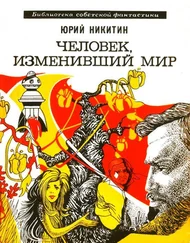

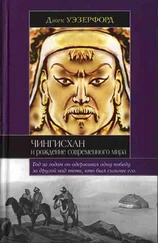
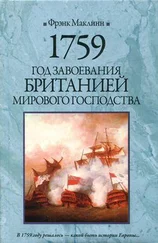

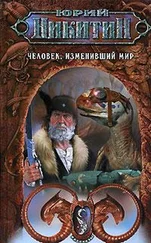
![Ксения Чепикова - Человек, научивший мир читать [История Великой информационной революции]](/books/388624/kseniya-chepikova-chelovek-nauchivshij-mir-chitat-ist-thumb.webp)
